Some time back, a friend @codfishcatfish was building a GPS disciplined oscillator for radio measurements. Part of the circuit uses a MAX232 device to interface the low voltage digital signals to a PC serial port. He found his cheap (from eBay) MAX232s got very hot and failed in use.
It was obvious the devices were fake, so I offered to tear one down to see what it really was, a cheap clone or a re-badged something else?
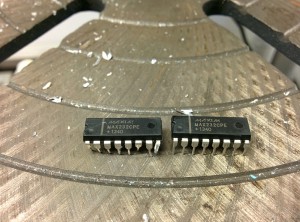
The standard technique to remove all the epoxy and metal to leave the bare silicon die is to use strong nitric acid. So I cut the legs off the chips, no point wasting acid dissolving those, and ground away some of the epoxy resin to speed up the dissolution.
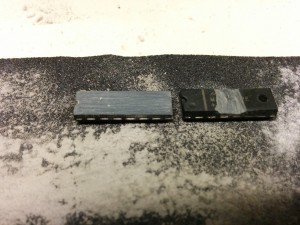
Soaking the ICs for an hour in room temperature nitric acid had no discernible effect, so I heated up the acid. The reaction became very vigorous!
It took about 20 minutes to remove sufficient epoxy to see the silicon die – it also removed the lead-frame and bond-wires so there was no chance to test the ICs after de-capping.
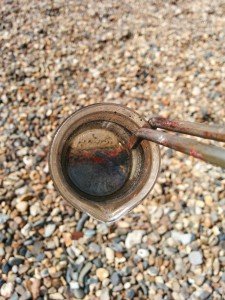
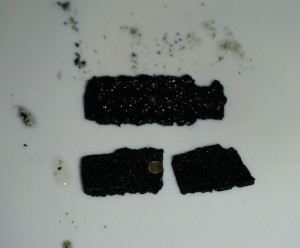
The ICs were dried and the die removed by scraping away the carbonised epoxy with a scalpel. This done, the die could be examined under high magnification to see if it looked anything like a real MAX232 or I could see any other identifying features.
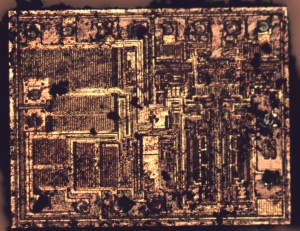
Comparison with a real MAX232 die proves these ICs are fake. The only identification I could find on the die is the following
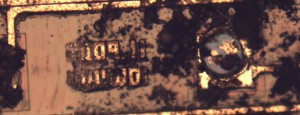
So I’m non the wiser as to who actually made these, but the device does seem to show a general resemblance to the layout of a real MAX232 – they didn’t just program a micro-controller to do the job or something similar.
It was just a fun diversion and a chance to try something I’d wanted to do for a while. I might try to find some more interesting ICs to pull apart and take better images of.
